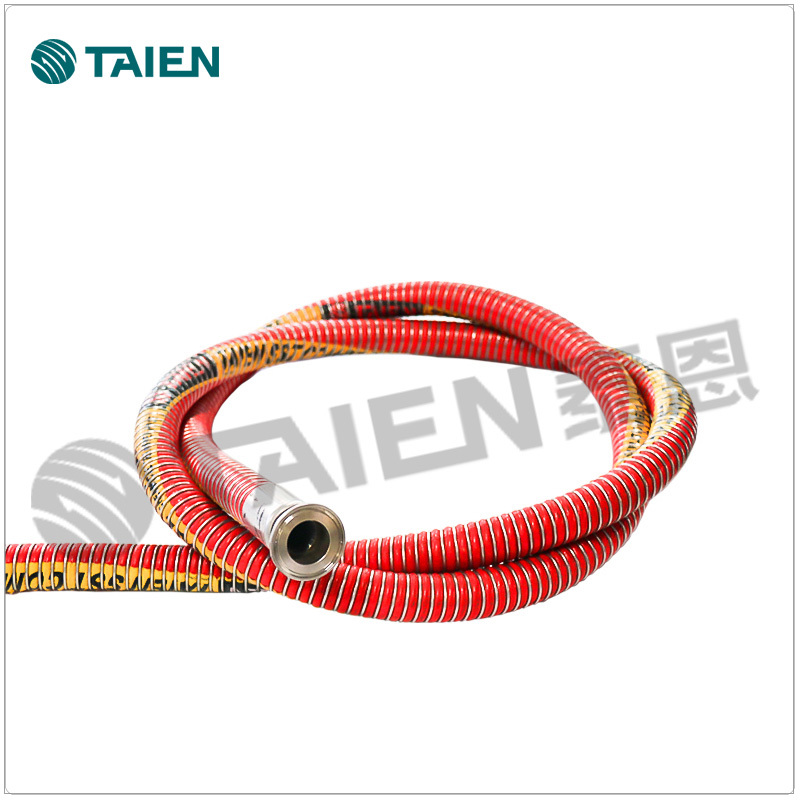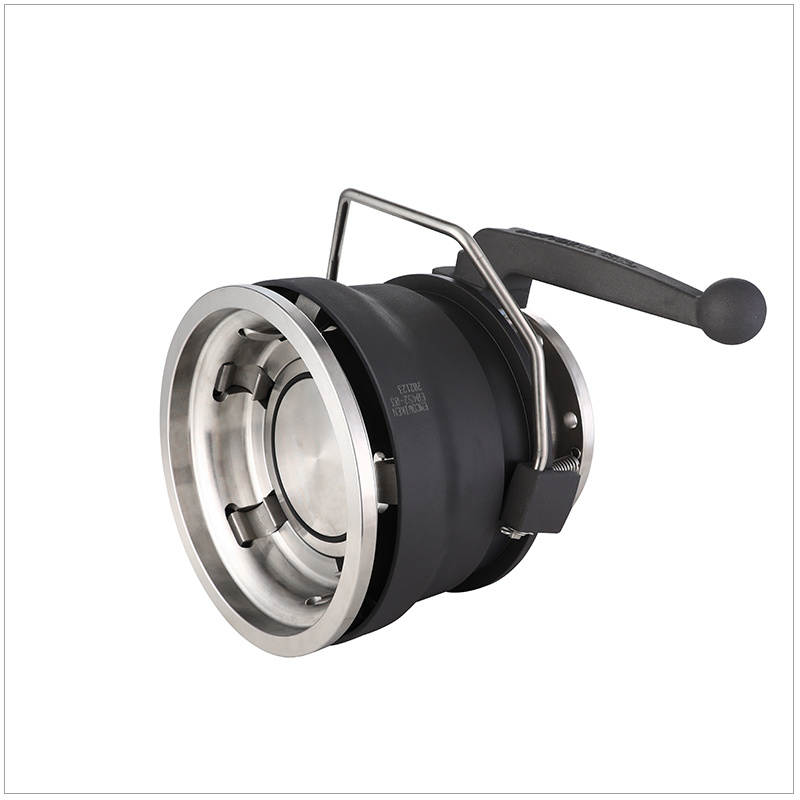Essential Features to Look for in a Quality Rubber Hose
Release time:
2025-06-22
Author:
Source:
Abstract
Essential Features to Look for in a Quality Rubber Hose
Rubber hoses are ubiquitous in numerous applications, from industrial settings to residential gardening. Their versatility and performance make them essential components in various domains. However, not all rubber hoses are created equal. When selecting a rubber hose, it is vital to consider specific features that ensure durability, flexibili
Essential Features to Look for in a Quality Rubber Hose
Rubber hoses are ubiquitous in numerous applications, from industrial settings to residential gardening. Their versatility and performance make them essential components in various domains. However, not all rubber hoses are created equal. When selecting a rubber hose, it is vital to consider specific features that ensure durability, flexibility, and safety. In this article, we will delve into the essential aspects to look for in a quality rubber hose that can meet your unique demands.
Table of Contents
1. 1. Material Quality: The Backbone of Durability
2. 2. Understanding Pressure Ratings for Safe Usage
3. 3. Temperature Resistance: Ensuring Performance Under Extreme Conditions
4. 4. Flexibility and Bend Radius: Achieving Optimal Maneuverability
5. 5. Abrasion Resistance: Protecting Your Investment
6. 6. Coupling Types: Ensuring Secure Connections
7. 7. Length and Diameter: Finding the Right Fit for Your Needs
8. 8. Maintenance Tips for Longevity
9. 9. Conclusion
10. 10. Frequently Asked Questions
1. Material Quality: The Backbone of Durability
The quality of the material used in a rubber hose is paramount. High-grade rubber hoses are typically made from synthetic rubber or natural rubber blends. These materials offer superior durability, flexibility, and resistance to environmental factors.
Natural rubber hoses excel in elasticity and tensile strength, making them ideal for a wide range of applications. On the other hand, synthetic rubber hoses often provide better resistance to abrasion, chemicals, and UV light. When selecting a rubber hose, ensure that it complies with industry standards, which is a testament to its quality.
2. Understanding Pressure Ratings for Safe Usage
Every rubber hose comes with a pressure rating, which indicates the maximum pressure the hose can withstand without bursting. Understanding this rating is crucial to prevent accidents and ensure the hose operates safely within its limits.
When choosing a rubber hose, look for hoses with clearly labeled pressure ratings. It’s also advisable to select a hose with a pressure rating higher than your intended use. For example, if you need a hose for high-pressure applications, opting for one that exceeds your needs will provide an added safety margin.
3. Temperature Resistance: Ensuring Performance Under Extreme Conditions
Temperature fluctuations can significantly impact the performance of rubber hoses. Quality rubber hoses are designed to withstand a wide range of temperatures without degrading or losing their structural integrity.
When selecting a hose, consider the temperature range of your application. Hoses that operate in extreme heat or cold should be specifically rated for those conditions. Look for hoses that maintain flexibility and performance even in harsh climates. This feature is particularly important in industrial settings where equipment is frequently exposed to varying temperatures.
4. Flexibility and Bend Radius: Achieving Optimal Maneuverability
The flexibility of a rubber hose is another essential feature that affects its usability. A flexible hose is easier to maneuver, making it suitable for tight spaces and intricate setups.
When assessing flexibility, consider the hose's bend radius. A smaller bend radius allows for tighter turns without kinking or damaging the hose. Additionally, a flexible hose is less likely to develop leaks and ruptures, ensuring a longer lifespan.
5. Abrasion Resistance: Protecting Your Investment
In many applications, rubber hoses face constant friction and contact with rough surfaces. Therefore, abrasion resistance is a critical feature to evaluate. Quality rubber hoses often incorporate abrasion-resistant materials that prolong their life and maintain performance.
When choosing a hose, look for additional features such as protective covers or reinforced jackets that enhance abrasion resistance. Investing in a hose with these qualities is vital for applications where wear and tear are common.
6. Coupling Types: Ensuring Secure Connections
The type of coupling on a rubber hose plays a crucial role in ensuring a secure connection. Proper coupling prevents leaks and maintains the integrity of your system.
There are various types of couplings, including threaded, quick-connect, and clamp-style couplings. Each type has its advantages, and the best choice depends on your specific application. Ensure that the coupling is compatible with your equipment and that it provides a tight seal to prevent any fluid loss.
7. Length and Diameter: Finding the Right Fit for Your Needs
The length and diameter of a rubber hose are key factors that influence its performance. Selecting the correct diameter ensures optimal flow rates, while the length determines how far you can reach with the hose.
When deciding on diameter, consider the fluid you’ll be transporting. Larger diameters are typically required for high-flow applications, while smaller diameters work well for lower flow rates. Additionally, measure the distance you’ll need to cover to ensure the hose is long enough for your requirements.
8. Maintenance Tips for Longevity
Proper maintenance is essential for extending the lifespan of your rubber hose. Regular inspections for cracks, leaks, and signs of wear can help identify potential issues before they become significant problems.
Additionally, cleaning your hose after each use can prevent buildup that might impair performance. Store the hose in a cool, dry place away from direct sunlight to protect it from UV damage. By implementing these maintenance practices, you can prolong the life of your rubber hose and ensure it functions optimally.
9. Conclusion
Choosing a quality rubber hose involves careful consideration of several essential features. From material quality to pressure ratings, each aspect plays a vital role in determining the hose's performance and longevity. By understanding these features, you can make an informed decision that meets your specific needs.
Investing in a high-quality rubber hose will not only enhance your efficiency but also ensure safety in your operations. Always prioritize durability, flexibility, and proper maintenance to get the most out of your rubber hose.
10. Frequently Asked Questions
1. What is the best material for a rubber hose?
The best material depends on your specific needs, but high-grade synthetic rubber is often preferred for its durability and resistance to chemicals.
2. How do I determine the right pressure rating for my application?
Always select a hose with a pressure rating higher than your maximum operating pressure for safety.
3. Can I use a rubber hose for hot water applications?
Yes, but ensure that the hose is specifically rated for high-temperature use.
4. How often should I inspect my rubber hose?
It's advisable to inspect your rubber hose regularly, especially before and after use to catch any signs of wear or damage.
5. What maintenance is required for rubber hoses?
Regular cleaning, proper storage, and periodic inspections are essential to maintain the hose's longevity and performance.
By focusing on these key features and maintenance practices, you can ensure that you select a rubber hose that meets your requirements and performs reliably for years to come.
Recommended Reading














